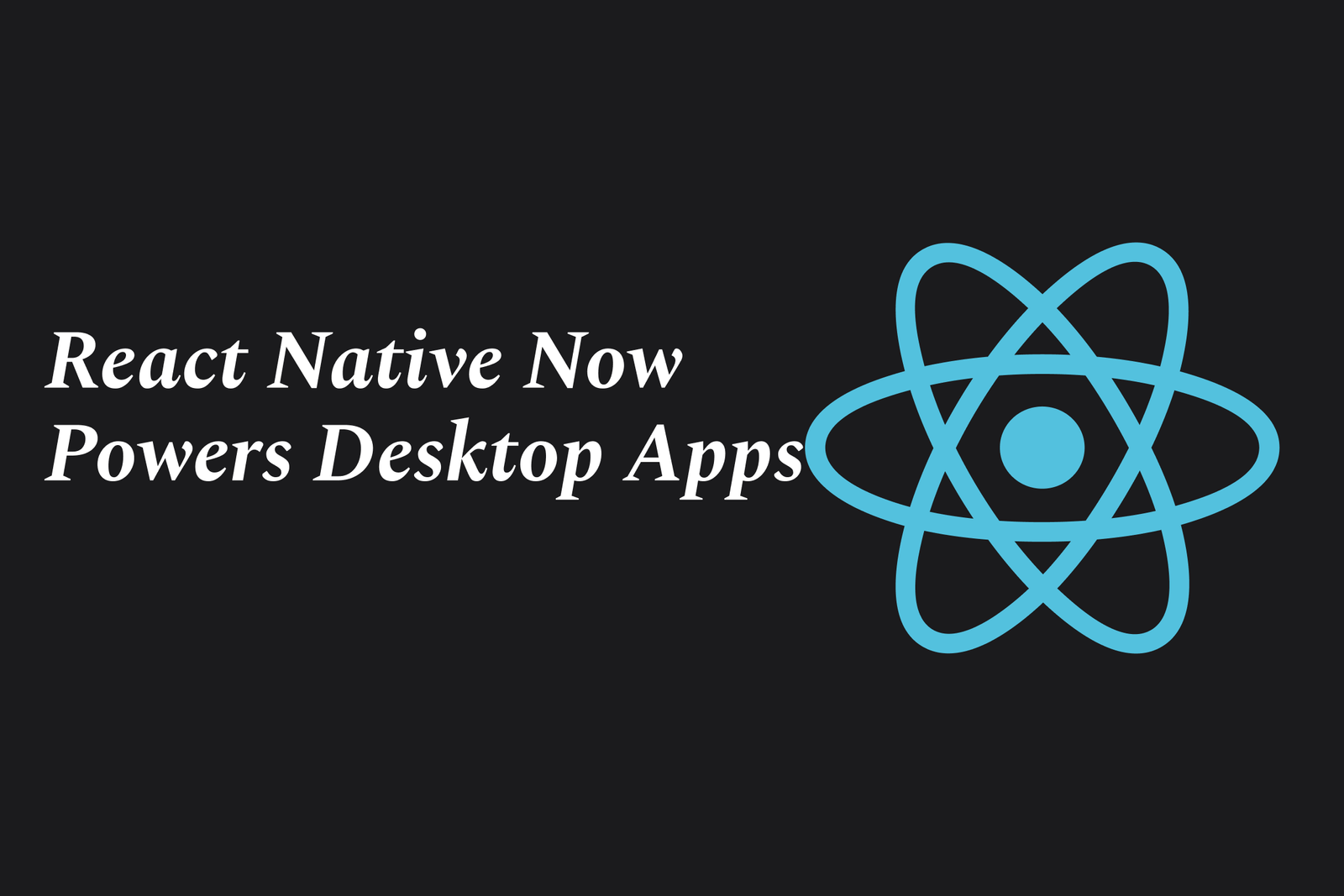React Native Now Powers Desktop Apps
React Native now powers desktop apps on Windows and macOS, enabling developers to build high-performance, native-feeling applications using JavaScript/TypeScript. It combines code sharing across platforms with native UI and APIs for seamless desktop experiences.
React Native Now Powers Desktop Apps
1 ) Introduction to React Native for Desktop
React Native, originally known for building mobile apps on iOS and Android, now supports desktop application development.
React Native for Desktop includes support for Windows and macOS platforms, enabling developers to build native desktop apps using JavaScript or TypeScript.
It leverages native controls, animations, and platform APIs to deliver high performance applications that blend seamlessly with the native environment.
2 ) Benefits of Using React Native on Desktop
Cross Platform Code Sharing: Allows substantial sharing of code between mobile, web, and desktop apps, increasing development efficiency.
Developer Productivity: Features like fast refresh speed up inner development loops.
Performance & Native Feel: Delivers app fundamentals—performance, accessibility, internationalization—on par with fully native Universal Windows Platform (UWP) apps.
Extensive Library Support: Leverages both JavaScript only libraries (npm) and native modules, with the ability to write custom native modules when needed.
Integration with Windows Ecosystem: React Native desktop apps can access any platform API and use native UI controls consistent with Fluent Design for Windows.
3 ) Use Cases and Adoption
Major companies including Microsoft, Facebook (Meta), Amazon, Shopify, and Wix use React Native to build powerful desktop apps in addition to mobile.
React Native apps power products such as Facebook Messenger Desktop, Microsoft Teams, Xbox Game Pass, and many enterprise applications.
This widespread adoption demonstrates React Native's maturity and suitability for production grade desktop software.
4 ) Comparison to Other Desktop Frameworks
Unlike Electron apps, React Native desktop apps tend to be smaller and more resource efficient because they rely on native UI components rather than bundling an entire browser engine like Chromium.
This results in faster startup times, lower memory usage, and better integration with native OS features.
React Native complements the Windows App SDK and WinUI, offering developers modern UI tooling with extensive platform reach.
5 ) Developer Experience and Challenges
Most application code remains in JavaScript or TypeScript, but developers should be prepared to write some native code to interface with platform specific features or optimize performance.
The ecosystem includes community modules, but contributions and native module development might be necessary to cover all use cases.
React Native’s active development and community support are expanding to improve desktop support features continuously.
6 ) Getting Started
Developers new to desktop development on Windows are encouraged to explore the Windows App SDK and WinUI for rich UI capabilities.
React Native for Desktop is ideal for those wanting to maximize code reuse, prefer JavaScript/TypeScript, and need native desktop app performance.
Resources and guides are available to assist developers in building React Native apps across Windows 10, Windows 11, and macOS platforms.
Summary:
React Native has evolved beyond mobile to empower developers to build performant, native feeling desktop apps for Windows and macOS using a shared JavaScript/TypeScript codebase. With major industry adoption and active development, React Native for Desktop offers an efficient alternative to traditional native or Electron apps, combining speed, native integration, and developer productivity.
https://justacademy.in/news-detail/android-system-diagnostics-tools
https://justacademy.in/news-detail/real-time-debugging-tools-for-flutter
https://justacademy.in/news-detail/the-future-of-react-native:-trends-every-dev-should-watch
https://justacademy.in/news-detail/flutter-vs-ionic-2025-performance
https://justacademy.in/news-detail/why-flutter-developers-are-in-high-demand-in-india
Related Posts
In 2025, top Angular libraries offer modern, feature-rich components and tools for building dynamic web apps. From powerful data grids to low-code platforms like UI Bakery, these libraries enhance development speed, UI design, and scalability, making them essential for Angular developers.
Migrating from AngularJS to Angular 17 involves gradually upgrading your app by running both frameworks together using tools like ngUpgrade, rewriting components in TypeScript, and adopting Angular’s modern architecture to enhance performance, maintainability, and long-term support.
Angular state management tools help organize and handle app data efficiently, improving scalability and maintainability. Popular options include NgRx for robust, RxJS-based patterns, and newer Signal Store solutions that offer simpler, reactive approaches integrated tightly with Angular’s latest features.
RxJS in Angular empowers developers to manage asynchronous data streams with powerful operators like `forkJoin`, `combineLatest`, and `zip`. Mastering these key operators in 2025 is essential for building efficient, reactive applications that handle complex event sequences seamlessly.
Angular performance optimization in 2025 focuses on improving app speed and responsiveness by using techniques like OnPush change detection, lazy loading, efficient data caching, and AOT compilation. These practices reduce load times, enhance user experience, and ensure scalable, fast Angular applications.
In 2025, Angular remains preferred for large-scale, enterprise apps with its robust, all-in-one framework, while Vue attracts developers seeking simplicity and fast development for smaller projects. Both frameworks excel, with choice driven by project needs and team expertise.
Angular Signals are a new reactive primitive in Angular 16 that enable fine-grained, efficient change detection by automatically tracking dependencies and updating only affected parts of the UI. They simplify state management and boost app performance, revolutionizing Angular's reactivity model.
Angular interview questions to prepare in 2025 focus on core concepts like components, directives, data binding, routing, and dependency injection, along with TypeScript mastery and latest Angular features to ensure strong practical knowledge for building scalable, efficient web applications.
AngularJS reached its official end of support in January 2022, meaning no further updates or security patches. To ensure app security and performance, developers should consider migrating to modern Angular versions or seek third-party long-term support options if immediate migration isn’t possible.
The Angular Roadmap 2025 highlights upcoming features focused on improving developer experience and performance, including zoneless Angular, Signals integration, enhanced Forms, async data handling, improved HMR, and expanded Angular Material/CDK enhancements, driving modern, efficient web app development.










